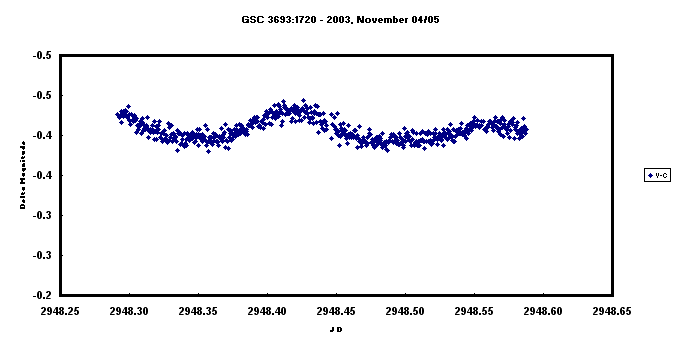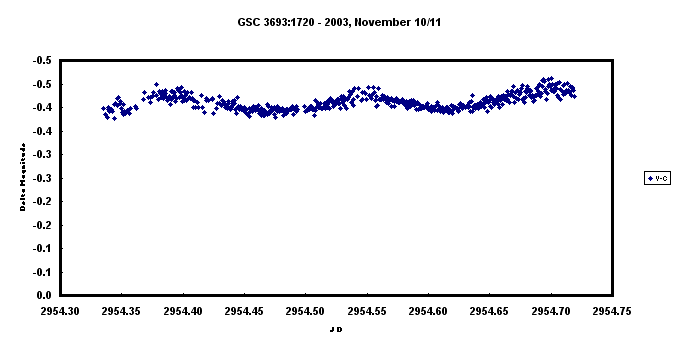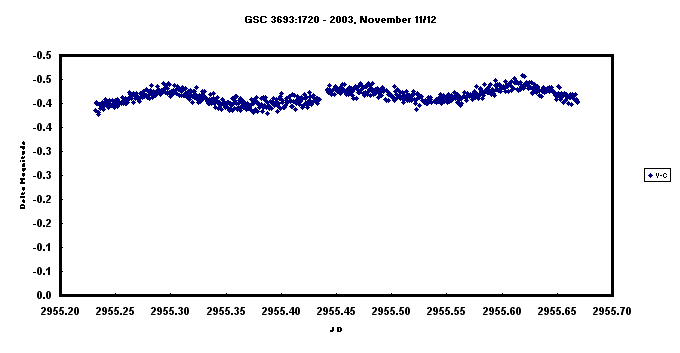GSC
3693:1720, a new variable near UV Per
On
November 10th, 2003, Finish amateur astronomer Arto
Oksanen (CBA Finland) announced his discovery of a
new variable star, very close to UV Per [cba-news,
10 nov 2003]. The star has GSC identification
3693:1720, and is listed at mag. 10.077 Vt. Arto writes : "...
The variability is about 0.05 magnitudes and period
is about 0.164 days. The star seems to be either
Delta Scuti or Beta Cephei type, both having low
amplitude and short period. The final classification
will need spectroscopic observations". More
information on the object is given by Arto Oksanen
on his website.
Upon request of Arto,
I started a photometric analysis of GSC
3693:1720 using my UV Per
images (in outburst in November 2003, and the direct
cause of GSC 3693:1720's variability detection). Below is an
overview of my
November 2003 CCD observations of GSC 3693:1720. All
unfiltered CCD images have been acquired at CBA
Belgium Observatory, using an ST-7 CCD and 0.35-m
f/6.3 telescope. Photometric conditions were as
follows :
2003, November
04/05 : good
2003, November 10/11 : poor (cirrus clouds)
2003, November 11/12 : good
2003, November 14/15 : good
The light curve below
(fig. 1) is a compilation of 4 nights of
observations, with a total of 2458 datapoints. The
detailed light curves of each individual night are
presented at the end of this page (fig. 5-8). Using
a beta version of a period determination
programme, that I have been developing in Visual
Basic over the course of the past months (and that
is specifically aiming at multi-night / multi-site
photometry data reduction), I have calculated the
periodicity of GSC 3693:1720 on the basis of the PDM
technique (fig. 2) and the Lomb periodogram Fourier
analysis (fig. 3). In both cases, I got a value
of 0.1531 +/- 0.0004 d, which is still
a bit different from the initial value mentioned by
Arto (see above). The corresponding phase diagram is
shown in fig. 4 and yields an average amplitude of
0.04 mag.
Belgian
amateur-astronomer Patrick Wils, who is a
specialist in the analysis of multi-period Delta
Scuti stars, commented as follows on our initial GSC
3693:1720 observations : "Given the period and
amplitude of the object, it has to be a Delta Scuti
variable, or another elliptical variable (e.g., a
low inclination EW). The Tycho catalogue lists
B-V=0.55 and 2MASS yields J-K=0.27, indicating a
(nearly) F5-star, which is again typical for Delta
Scuti stars".

Fig. 1 - overall light
curve of GSC 3693:1720, consisting of 2458
observations collected at CBA Belgium Observatory.
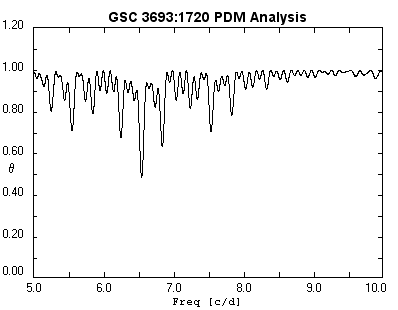
Fig. 2 - PDM analysis using the above observations,
indicating a period of 0.1531 d
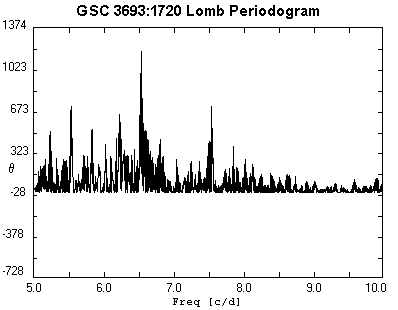
Fig. 3 - Lomb periodogram using the same
observations, yielding a similar period
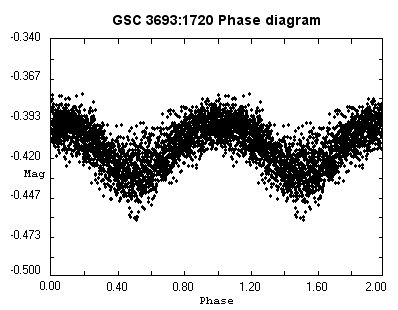
Fig. 4 - Phase diagram corresponding to a period
of 0.1531 d
The figures below
(Fig. 5-8) show the light curves of each individual
night.
